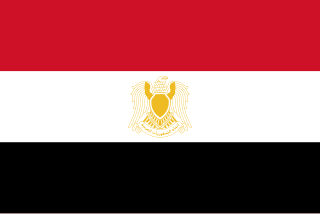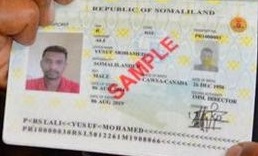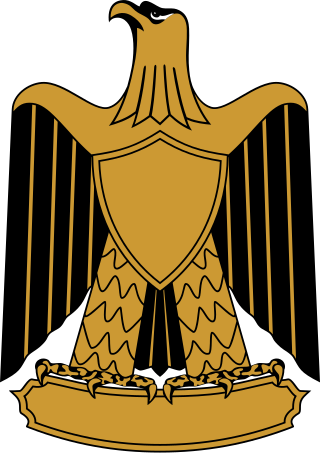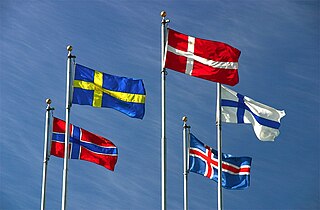
A national flag is a flag that represents and symbolizes a given nation. It is flown by the government of that nation, but can also be flown by its citizens. A national flag is typically designed with specific meanings for its colours and symbols, which may also be used separately from the flag as a symbol of the nation. The design of a national flag is sometimes altered after the occurrence of important historical events. The burning or destruction of a national flag is a greatly symbolic act.

The national flag of Libya was originally introduced in 1951, following the creation of the Kingdom of Libya. It was designed by Omar Faiek Shennib and approved by King Idris Al Senussi who comprised the UN delegation representing the three regions of Cyrenaica, Fezzan, and Tripolitania at UN unification discussions.
As a result of the Syrian Civil War since 2011, there are at least two flags used to represent Syria, used by different factions in the war. The incumbent government of the Syrian Arab Republic led by the Ba'ath Party uses the red-white-black tricolour originally used by the United Arab Republic, while Syrian opposition factions such as the Syrian National Coalition use the green-white-black tricolour known as the ''Independence flag'', first used by Mandatory Syria.
This armorial of sovereign states shows the coat of arms, national emblem, or seal for every sovereign state. Although some countries do not have an official national emblem, unofficial emblems which are de facto used as national emblems are also shown below.

The Federation of Arab Republics was an unsuccessful attempt by Muammar Gaddafi to merge Libya, Egypt and Syria in order to create a unified Arab state. Although approved by a referendum in each country on 1 September 1971, the three countries disagreed on the specific terms of the merger. The federation lasted from 1 January 1972 to 19 November 1977.

Since 2011, Libya currently does not have an official national emblem. The Constitutional Declaration issued by the National Transitional Council on August 2011 defines the flag of Libya, but does not make any provisions for a coat of arms.

Muammar Gaddafi became the de facto leader of Libya on 1 September 1969 after leading a group of young Libyan Army officers against King Idris I in a bloodless coup d'état. After the king had fled the country, the Revolutionary Command Council (RCC) headed by Gaddafi abolished the monarchy and the old constitution and established the Libyan Arab Republic, with the motto "freedom, socialism and unity". The name of Libya was changed several times during Gaddafi's tenure as leader. From 1969 to 1977, the name was the Libyan Arab Republic. In 1977, the name was changed to Socialist People's Libyan Arab Jamahiriya. Jamahiriya was a term coined by Gaddafi, usually translated as "state of the masses". The country was renamed again in 1986 as the Great Socialist People's Libyan Arab Jamahiriya, after the United States bombing that year.

The Kingdom of Libya, known as the United Kingdom of Libya from 1951 to 1963, was a constitutional monarchy in North Africa that came into existence upon independence on 24 December 1951 and lasted until a bloodless coup d'état on 1 September 1969. The coup, led by Muammar Gaddafi, overthrew King Idris and established the Libyan Arab Republic.

The Kenyan passport is issued to Kenyan citizens in accordance with the Constitution of Kenya, 2010 and as provided for in the Kenya Citizens and Immigration Act that commenced on 30 August 2011. In addition issuance process is regulated by Legal Notice No. 64. If eligible, an individual can apply for a New Passport, Renewal Passport and Replacement Passport. Passports are issued by the Department of Immigration. The department is under the Ministry of Interior and Coordination of National Government. Kenyan passports are usually used as a form of ID as well and would be rated as second to the Kenyan national ID card. Before Kenya got independence from Britain, British passports were used.
The following outline is provided as an overview of and topical guide to Libya:

A Yemeni passport is a government document used by citizens of Yemen for international travel. Yemeni passports are issued by the Immigration and Naturalization Service of the Ministry of the Interior, and by some Yemeni consulates and embassies around the world.

Visa requirements for Emirati citizens are administrative entry restrictions by the authorities of other states placed on citizens of the United Arab Emirates (UAE).

Visa requirements for South African citizens are administrative entry restrictions by the authorities of other states placed on citizens of the Republic of South Africa.

The 1951 Libyan Constitution was brought into force on October 7, 1951, prior to Libya's formal declaration of its independence on December 24, 1951 as a constitutional and hereditary monarchy under the rulership of King Idris. The enactment of the Libyan Constitution was significant in that it was the first and only piece of legislation that formally entrenched the rights of Libyan citizens after the post-war creation of the Libyan nation state.

The Somaliland passport is the passport issued to citizens of the unrecognized country of Somaliland for international travel. A passport was issued for the first time in 1996, and a biometric passport was in 2014, in line with new global standards and the requirements of the International Civil Aviation Organization.

The 1969 Libyan revolution, also known as the al-Fateh Revolution or 1 September Revolution, was a coup d'état and revolution carried out by the Free Officers Movement, a group of Arab nationalist and Nasserist officers in the Libyan Army, which overthrew the Senussi monarchy of King Idris I and resulted in the formation of the Libyan Arab Republic. The Free Officers Movement was led by Colonel Muammar Gaddafi.
A national coat of arms is a symbol which denotes an independent state in the form of a heraldic achievement. While a national flag is usually used by the population at large and is flown outside and on ships, a national coat of arms is normally considered a symbol of the government or the head of state personally and tends to be used in print, on armorial ware, and as a wall decoration in official buildings. The royal arms of a monarchy, which may be identical to the national arms, are sometimes described as arms of dominion or arms of sovereignty.

The Eagle of Saladin, known in Egypt as the Egyptian Eagle, and the Republican Eagle, is a heraldic eagle that serves as the coat of arms of many countries; Egypt, Iraq, Palestine, and Yemen. Since the 1952 Egyptian revolution, the eagle has been an iconic symbol of Egypt, and of Arab nationalism, particularly in Arab states that underwent anti-imperialist political change from the 1950s onwards. It was formerly the national symbol of the now defunct United Arab Republic, North Yemen, South Yemen, and the Libyan Arab Republic.

Flag families are sets of national flags with similarities in their design, often based on a shared history, culture, or influence. Families do not include flags with coincidental similarities. Flags may be in multiple flag families. Only twelve current national flags existed before the 19th century, when large-scale flag use began. Seven of these flags are the inspiration for more than 130 current national flags and ensigns.

















